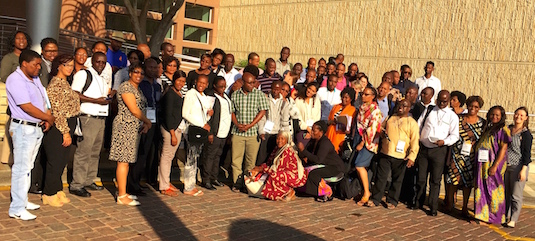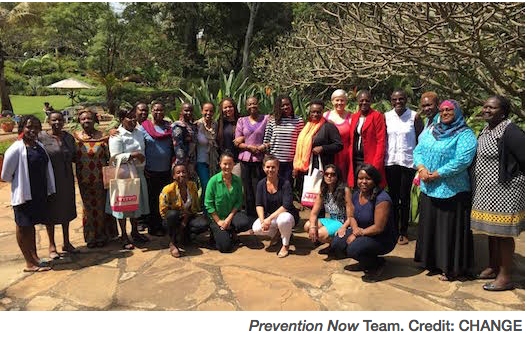UPDATE: Slides and audio from the webinar mentioned below are now available. Click here.
WHO today issued an “Early Release Guideline” on when to start antiretroviral therapy and on pre-exposure prophylaxis (PrEP) for HIV. This document recommends 1) initiation of ART in adults living with HIV, regardless of CD4 cell count, and 2) offer of PrEP as a prevention option to all people at substantial risk of acquiring HIV. (The release is “early” relative to a comprehensive update of its consolidated ARV guidelines, slated to come out at the end of the year.)
If implemented, these sweeping recommendations have the potential to change the world by simplifying ART for people living with HIV and revolutionizing prevention for people at risk. So it is, first, a moment for some celebration. At AVAC, we can’t think of another time in the history of the epidemic when there has been a simultaneous game-changing shift on two fronts—prevention and treatment. Of course, the boundaries are blurred—effective ART in people living with HIV also reduces the chances that they will pass on the virus, so it is a prevention innovation, too. Now the real work begins: figuring out how to bring the blurred boundaries into sharp clarity in comprehensive national plans and global strategies.
As we celebrate, we also note the great work that lies ahead to ensure that these guidelines are turned into practice. There are funding and logistics hurdles, and there are also major information gaps. PrEP-awareness is growing, but there are still plenty of questions—see below for links to some key resources. And ART “on demand” is a wholly new concept in many parts of the world where people were told to wait until they were sick or approaching low CD4 cell counts to begin.
The work of answering these questions with smart implementation, rapid data collection and analysis, and expanded funding for civil society-led service delivery and advocacy is great work indeed. And we can’t wait to get started!
To get the conversation going, here are a few key points from an initial read of the document, as well as some additional background resources related to daily oral PrEP and the new guideline.
In addition, join advocates on a global webinar with representatives from WHO to hear more and ask questions on Monday, October 5:
- Webinar on WHO Guidelines on when to start antiretroviral therapy and on pre-exposure prophylaxis for HIV, Monday, October 5 at 10 AM ET (see www.timeanddate.com for the time in your area).
Guidelines overall:
- The document lays out four principles that should underpin implementation efforts. One that civil society will need to ensure is enacted is: “Implementation of the guideline needs to be accompanied by efforts to promote and protect the human rights of people in need of HIV services, including by ensuring informed consent, preventing stigma and discrimination in the provision of services and promoting gender equity.” (Click here for more on the barriers and facilitators to women’s access to ART.)
Immediate initiation of ART:
- The guideline calculates that, if implemented, immediate initiation of ART would increase the number of people living with HIV eligible for treatment by up to 35 percent.
- Throughout the discussion of on-demand ART—which is broken down by age groups, but not disaggregated by gender or other identity—there is recognition of knowledge gaps in how to deliver ART on demand. The guideline refers to qualitative research with people living with HIV and a literature review highlighting messages about how early ART can reduce mortality risk, compared to waiting until CD4 thresholds from former guidance.
- The guideline contains a bit of a mixed message regarding CD4 cell count versus viral load. Noting that “it may be reasonable to reduce or stop CD4,” the document also says that CD4 has an important role to play in many contexts.
PrEP:
- The recommendation of PrEP for all people at substantial risk expands prior WHO guidance focusing on men who have sex with men and serodiscordant couples. Importantly, it vastly expands the likelihood that oral PrEP will be offered to adolescents and young women. As it is the first intervention that women can use discretely—not at the time of sex—this is a potentially profound development, and one that can lay the groundwork for other tools in the pipeline, such as the vaginal dapivirine ring, which is in trials, with data expected in early 2016.
- But what does substantial risk mean? Well, WHO will tell you—it means living in a context or community where the background incidence (number of new cases of HIV per year) is 3 percent. This doesn’t mean the overall incidence in your country has to be 3 percent—but that this is the estimated or documented rate in a context like serodiscordant couple-hood, being a man who has sex with men, a person in prison, a sex worker, an adolescent girl. The reason it’s phrased this way, WHO says, is to allow offer of PrEP “based on individual assessment, versus risk group.” WHO also notes that there are times when PrEP should be offered at a lower incidence, too.
Some more resources:
- Want to know what PrEP is and how it feels to use it? A round up of several basic tools explaining what PrEP is, and perspectives from users.
- Want tools from normative agencies to help explain the guideline? In July, 2015 UNAIDS released a new “Q and A” document on oral PrEP, and UNAIDS and WHO released a background paper released a background paper, developed jointly with AVAC, titled Oral Pre-exposure Prophylaxis: Putting a new choice in context. If you want basic background on PrEP, the Q&A is a great resource from a normative (official) agency—and for policy makers or others who may want to develop PrEP guidance or question whether PrEP is right for a given context or community, the longer piece really shows the direction that the world is likely to go in.
- PrEP Watch (www.prepwatch.org) is a clearinghouse for PrEP data, additional research, cost, access and advocacy efforts across the globe. If you don’t find what you are looking for—or have a resource to add—please let us know.
- Webinar on WHO Guidelines on when to start antiretroviral therapy and on pre-exposure prophylaxis for HIV, Monday, October 5 at 10 AM ET (see www.timeanddate.com for the time in your area).


